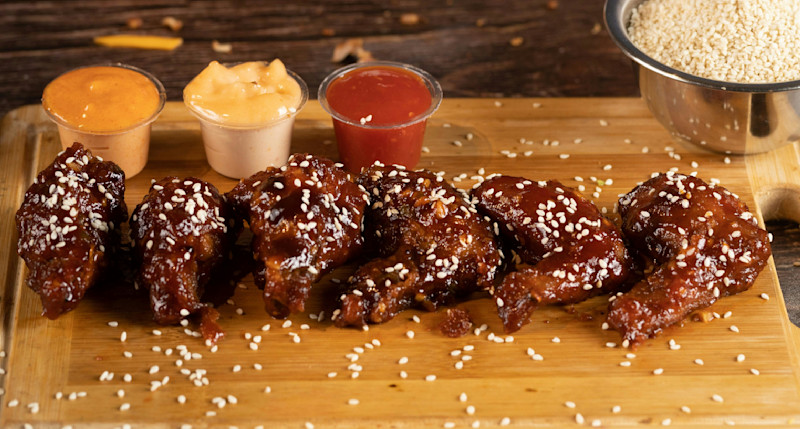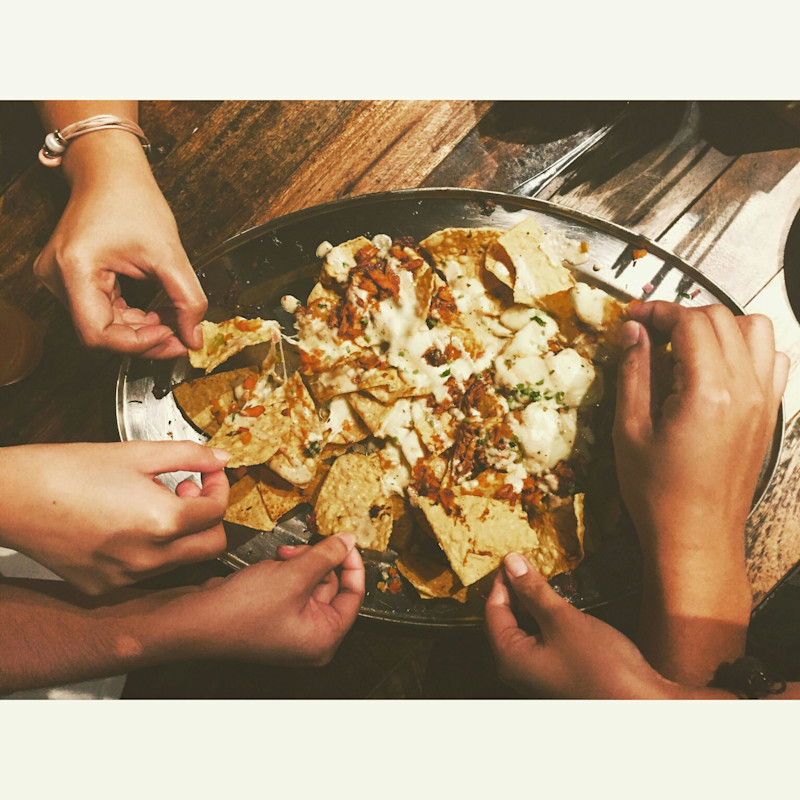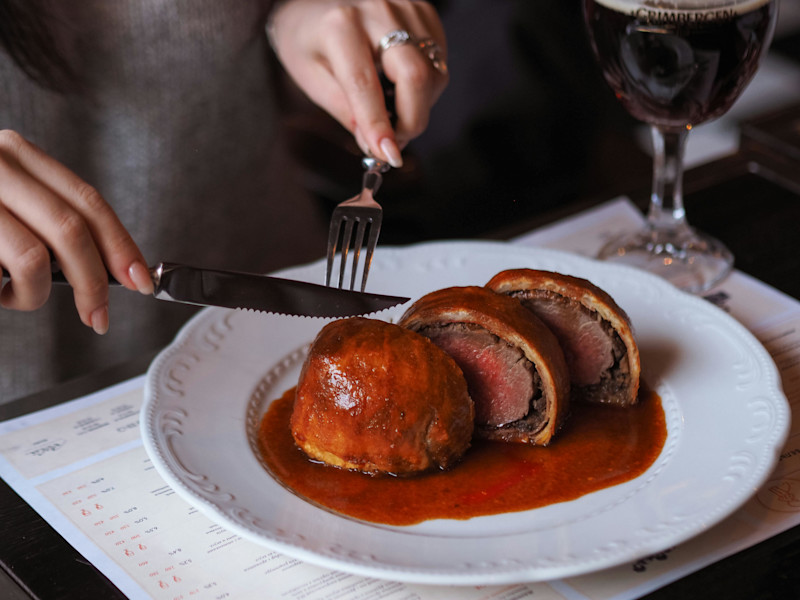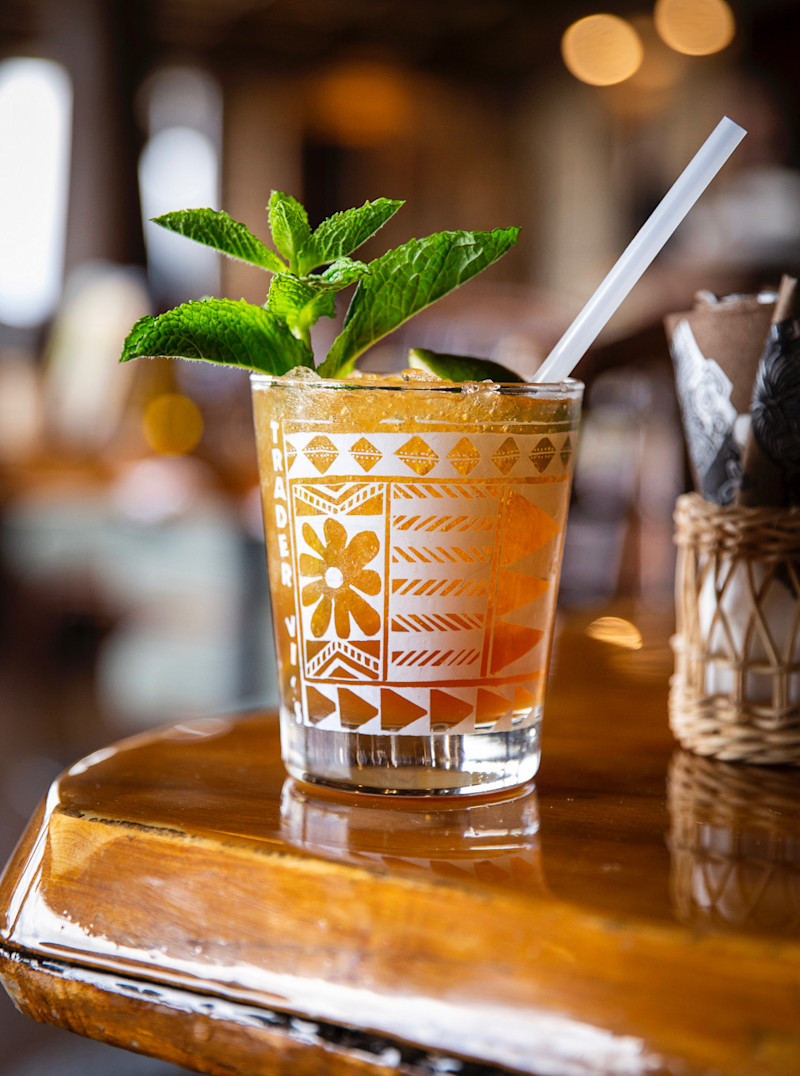
From Caesar Salads to Buffalo Wings, every delicious meal must have originated somewhere, and a lot of these delightful creations have origin stories that are sure to surprise you
Prepare to embark on a journey through the tantalising world of food etymology, where every dish carries a story as rich and flavourful as its taste. Have you ever savoured a mouthwatering meal and found yourself pondering the curious origins of its name? Looking at both the humblest of beginnings and the most serendipitous creations, the global culinary landscape is peppered with iconic dishes, each boasting a tale as diverse as the ingredients themselves.
Join us as we peel back the layers of time to uncover the captivating histories, myths, and legends behind beloved foods like Buffalo Wings, Nachos, Beef Wellington, and many more taste sensations. Your mouth will surely be watering as we challenge your culinary perceptions and increase your knowledge of renowned bites in this exceptional exploration of gastronomic nomenclature.
Guards, Seize her Salad!
In the dynamic tapestry of culinary lore, the Caesar Salad occupies a unique and beloved niche, celebrated by gourmands and casual diners alike. Yet, despite its ubiquity and acclaim, the true origins of this iconic dish are often shrouded in delightful mystery and common misconceptions.
Contrary to popular belief, the Caesar Salad has no connection to Julius Caesar, the famed Roman dictator. Instead, its birthplace is the bustling streets of Tijuana, Mexico, at a charming establishment called Caesar’s, situated on the lively Avenida Revolución. The mastermind behind this gastronomic creation was Cesare Cardini, an inventive Italian chef who emigrated to Mexico and brought with him a flair for dramatic presentation and a knack for culinary innovation.
The legend of the Caesar Salad began on a busy Fourth of July in 1924. Facing a restaurant packed with hungry patrons and a kitchen running low on supplies, Cesare faced a dilemma that would daunt even the most seasoned chefs. It was in this moment of scarcity that his creativity sparked, taking a few humble ingredients left at his disposal, he crafted a dish destined to become a global sensation.

Cesare’s original recipe was a masterclass in simplicity and flavour. It featured whole leaves of crisp romaine lettuce dressed in a daring emulsion of raw egg yolks and vibrant lemon juice, all enhanced with a drizzle of rich Italian olive oil. He added a generous sprinkle of Parmigiano-Reggiano cheese and a few dashes of Worcestershire sauce for a deep, umami kick. The final touch was the crunchy, toasted baguette slices, which added a satisfying texture that contrasted beautifully with the tender greens.
Word of Cesare’s revolutionary salad spread rapidly, transcending borders and captivating palates across the globe. Today, the Caesar Salad is a stalwart feature on menus worldwide, showcasing how a moment of culinary genius continues to delight and inspire to this day.
Buffalo gives you Wings
Buffalo, New York, proudly claims the title as the birthplace of the fiery and beloved Buffalo Wings, a dish that commands a special place in the hearts of food enthusiasts everywhere. These wings, celebrated for their deep-fried crispiness and their smothering of blazing hot sauce, have become synonymous with American comfort food. Whether enjoyed as a standalone snack or alongside staples like pizza and burgers, Buffalo Wings have an unmatched ability to ignite a sensory celebration with every bite.
The tale of how Buffalo Wings came to be is steeped in intrigue. It all started in the Anchor Bar, owned by Frank and Teressa Bellissimo, who are widely credited with inventing the dish in the early 1970s. Their original recipe quickly catapulted to fame, setting the standard for what Buffalo Wings would become. Yet, the plot thickened in 1980 when John Young, proprietor of Wings N’ Thighs, stepped into the spotlight. In a notable New York Times interview, Young claimed that it was he who inspired Frank Bellissimo, offering a different take with his breaded whole wings drenched in a unique ‘Mambo’ sauce—a stark contrast to the Bellissimos’ unbreaded version.

Despite the controversies surrounding its origin, by the late 1970s, Buffalo Wings had soared in popularity, securing their spot as a culinary staple not just in Buffalo but across the nation. The precise birth story of these wings may be murky—was it the Bellissimos' genius or Young's innovation? —but one thing remains clear: their widespread adoration is undeniable, cementing their status as a quintessential delight in American cuisine.
Its Khwesaunh! Not cro-saunt!
Croissants, the embodiment of French pastry perfection, have a very meticulous baking process. First, the croissant is layered with luscious soft butter, then it is diligently folded and rolled multiple times until it becomes a thin sheet. It is then skilfully cut, rolled into its historical crescent shape, and baked until the oven magically transforms it into the beautiful, buttery, and flaky breakfast item we know and love.

This revered dish has many origin stories, the most accepted belief being that its nomenclature is attributed to its iconic crescent shape. Alternatively, some people believe it has a deeper, more historical significance with a legend suggesting that Croissants were made to commemorate the defeat of the Ottoman Empire in the Battle of Vienna. Its crescent shape was presumably used to mock the moon on the Ottoman Empire flag.
This tale, although unproven, elevates the simple croissant from a humble pastry delight to a dish infused with historical significance. Regardless, Croissants continue to be a staple in French bakeries and a fascinating phenomenon to tourists worldwide.
Nachos are for Machos
Nachos, a necessary snack for any game night, were the brainchild of innovative chef Ignacio ‘Nacho’ Anaya. In 1940, a group of American military wives ventured across the border into Piedras Negras, Mexico. After a long and exhausting day of shopping, their hopes for a hot, satisfactory meal were squashed when they sadly discovered that none of the restaurants in the area were open. Starving, they found themselves at the door of the Victory Club restaurant, where Nacho was at the helm as head chef.
He sympathised with the wives and decided to whip something up for them from the leftovers in his fridge. He cut up some tortillas, fried them into chips, topped them with freshly grated cheese, added some sliced jalapeños, and baked them until the tasty cheese had all melted. He served this dish straight from the oven, prompting praise and adoration from the wives who swiftly spread the word of this wonderful creation, leading to masses of people seeking out the restaurant in search of this mysterious but delicious dish.

Seeing the rise in popularity, he added this dish to his menu and named it after himself. Nacho recipes today are enjoyed with a myriad of toppings like fresh guacamole, tangy tomato salsa, delicious sour cream, and a variety of other toppings, but the sheer satisfaction and happiness derived from eating every tasty morsel of them remains unchanged.
Nothing tops a Cobb
Cobb Salad, a renowned culinary masterpiece, is one of the go-to dishes for those seeking a light and healthy meal. Named after the mastermind behind its creation, Bob Cobb, Cobb Salad shares a similar origin story to Nachos. Bob, the former owner of the Brown Derby Restaurant in legendary Hollywood, California, found himself rummaging through the remnants in his fridge one night to satiate his gnawing hunger.
He combined fresh lettuce, hard-boiled eggs, chopped tomatoes, chives, avocadoes, and blue cheese. Hearing the sizzle of bacon being cooked by a line cook near him, he added a few sliced strips, elevating the simple salad to another level of gastronomic brilliance.
Satisfied with his work, he shared it with his friend, Sid Grauman, founder of Grauman’s Chinese Theatre. Grauman was so fascinated with this wholesome salad that he returned the next day to order a ‘Cobb Salad’ thus coining the name. Cobb Salad, the byproduct of hungry desperation, is now a sought-after meal at restaurants, earning its name in the list of the most popular salads in the world.
Delicious Footwear: The Beef Wellington
A dish renowned for its name being screamed across Hell's Kitchen by possibly the angriest Scottish chef around, Gordon Ramsay, the Beef Wellington is a staple of many modern dining destinations. This culinary masterpiece features a tender beef fillet, lovingly wrapped in puff pastry, baked to perfection, and often topped with a rich pâté. Although Gordon Ramsay has played a pivotal role in its popularisation in contemporary dining, elevating it to the status of his signature dish and the priciest main course at his restaurant, the dish's international acclaim began earlier, notably through the influential cookbook of culinary legend Julia Child.

The exact origins of Beef Wellington are unclear, with many attributing its creation to a celebration of British patriotism. A popular legend suggests it was crafted by the chefs of Arthur Wellesley, the Duke of Wellington, to commemorate his historic victory over Napoleon Bonaparte at the Battle of Waterloo. This tale, while romantic, remains unsubstantiated by historical records.
This interesting backstory adds a layer of historical allure to the dish, intertwining it with a narrative of national triumph and culinary innovation, a combination that perhaps contributes to its enduring appeal on fine dining menus across the globe.
Take a Sip: Refreshing Beverages with Unique Origins
It's not only foods that have unique origin stories; many drinks also come with quirky names and intriguing backgrounds that reflect their colorful histories. From refreshing non-alcoholic beverages to exotic cocktails, these drinks offer a glimpse into the people, places, and moments that have shaped their legacies. Each of these drinks not only delights the palate but also carries a piece of history, reminding us of the rich tapestry of cultural influences that can be found in our glasses.
The Arnold Palmer is a beloved refreshment that marries iced tea with lemonade, named after the legendary American golfer Arnold Palmer. Known for his preference for this drink combination, Palmer would often order it in clubhouses, prompting others to request “the Palmer drink.” Over time, this blend gained fame as the Arnold Palmer, forever associating the refreshing concoction with the golfer’s name.
The Mai Tai has another intriguing back story, originating from the tropical imagination of Victor Jules Bergeron, better known as Trader Vic. In 1944, at his Oakland restaurant, Trader Vic's, he concocted a new rum-based cocktail for some Tahitian friends. Upon tasting it, one friend exclaimed, "mai tai-roa ae," which translates to "Out of this world - the best!" in Tahitian. This enthusiastic approval gave the drink its name and placed it among the classics of tropical tiki culture, spreading its fame far beyond the Polynesian-themed walls of Trader Vic’s.

Moving to the Caribbean, the Mojito traces its roots back to the sugar cane fields of Cuba, where it is said to have been originally created by African slaves using simple local ingredients. The drink’s name likely derives from “mojo,” a Cuban seasoning made from lime and used to flavour dishes, suggesting the drink originally functioned as a type of “little spell” to refresh and invigorate. La Bodeguita del Medio, a famous bar in Havana, claims the Mojito as its own, bolstered by the endorsement of famed writer Ernest Hemingway.
Lastly, the Shirley Temple, named after the famous child actress of the same name, is a sweet, non-alcoholic drink traditionally made from ginger ale, a splash of grenadine, and garnished with a maraschino cherry. Its origins are contested, though one popular story credits a bartender at Chasen’s in West Hollywood, California, with creating the drink to serve Shirley Temple herself. Despite its association with her, Temple admitted to not being fond of the drink, finding it overly sweet, yet it remains a popular choice for those seeking a festive, non-alcoholic option.
Exploring the rich and captivating stories behind these iconic dishes offers a tantalising glimpse into the ways food transcends boundaries, bridging languages, cultures, and nations. Each dish, with its unique heritage, has woven its way into the fabric of global cuisine, earning a place of honour on the world’s dining tables. These culinary journeys remind us that greatness often springs from humble beginnings or serendipitous creations, inspiring us to appreciate the unexpected and universally beloved flavours that define and enrich our global food heritage.
For more related updates and to Katch us covering similar topics, watch this space!
Katch our game-changing PR and Communications, Social Media, Branding and Design, Brand Consultancy, Digital Marketing, and Global Communications services to help your brand make noise. Get in touch with our 360-Marketing agency in Dubai, Qatar, Saudi Arabia, and London, and let’s get the conversation started!
